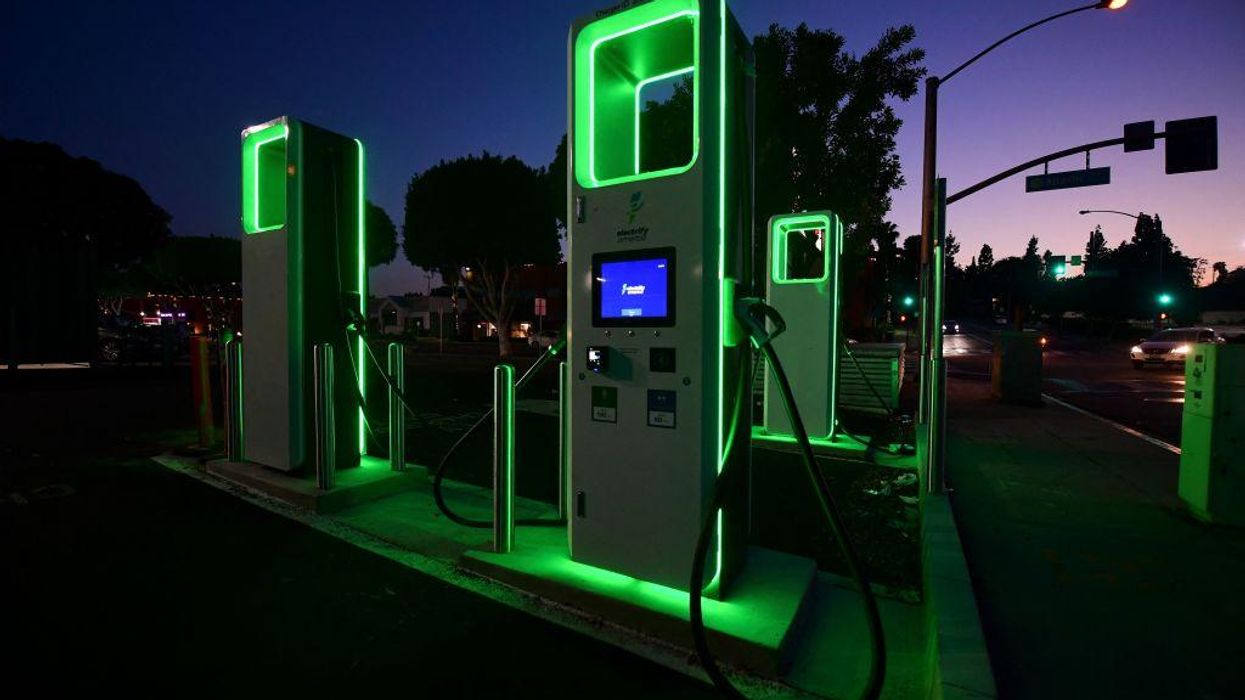
Photo by FREDERIC J. BROWN/AFP via Getty Images

On Thursday, California's Air Resources Board voted in favor of banning the sale of new gas-powered vehicles by 2035. All new cars, trucks, and SUVs will be required to run on electricity (32% of which is presently generated by natural gas in the state) or hydrogen. This comes as a result of Democrat Gov. Gavin Newsom's 2020 directive prompting regulators to pursue such a policy. It is unclear, however, whether the state's electric grid will be prepared for the transition.
Jack Brouwer, a professor of mechanical and aerospace engineering at the University of California Irvine, told CBSLA that the "grid does not currently have the capability to add millions of battery electric or even fuel-cell electric vehicles today." Whether it will be possible by 2035 will depend upon whether the state will make "reasonable investments in the grid to enable this to actually happen and to happen well."
The state's heavy reliance on solar and other renewables — upon which it intends to depend for 60% of all its energy by 2030 — has proven destabilizing in recent years.
Hundreds of thousands of residents suffered rolling blackouts in 2020. The state had to burn more gas in 2021 to avoid similar blackouts.
Earlier his year, Alice Reynolds, president of the Public Utilities Commission, warned of further outages, prompting Newsom to postpone the closure of California's last nuclear plant, Diablo Canyon.
Last week, the manager of California's power grid issued a statewide alert, pleading with residents and businesses to cut back on power usage, as the grid could not withstand additional strain.
Amid shortages, calls for rationing, and temperamental supply, the Western States Petroleum Association stated yesterday that the "electrification of the transportation sector will increase demand by around 300,000 gigawatt-hours stateside." The Sacramento Bee noted that this would be equivalent to a doubling of present electricity demands.
Senior energy analyst at the Union of Concerned Scientists Mike Jacobs told Yahoo Finance, "The use of an electric vehicle is like adding one or two air conditioners to your residence in terms of its energy increase."
According to Brouwer, "If we try to move in this direction and only use battery electric vehicles, we will fail. ... The grid cannot charge every single transportation application." He recommended that California also invest in fuel-cell electric vehicles.
Whether it be a fuel-cell or a battery electric vehicle, investment in the grid is believed to be necessary to accommodate the charge needed for that additional "air conditioner."
Paul Griffo, a spokesperson for the utility company Southern California Edison, said that investments are presently being made in the grid so there will be sufficient energy when the sale of gas-powered cars in the state ends. "Southern California Edison is investing over $5 billion in modernizing the grid, so that we can handle the addition needs of our customers in the future, including electric cars."
Even if the grid is buttressed in order to keep up with demand, there is also the question of whether there will be enough charging stations to service all the vehicles.
As of January 2022, California had 837,887 light-duty electric vehicles (i.e. battery electric, plug-in hybrid, and fuel cell). It presently has 1,943 medium- and heavy-duty electric vehicles. The state plans to have 1.5 million zero-emissions vehicles on its roads by 2025 and at least 5 million on its roads and by 2030.
According to a 2021 California Energy Commission report, in order to support 5 million electric vehicles, California will require over 700,000 public and shared private chargers. In a subsequent release, the CEC indicated the state will require 1.2 million chargers by 2030.
CEC Commissioner Patty Monahan indicated that this goal is "ambitious." After all, the CEC has noted that the state presently has only 79,023 electric vehicle chargers. That includes both public and private chargers.